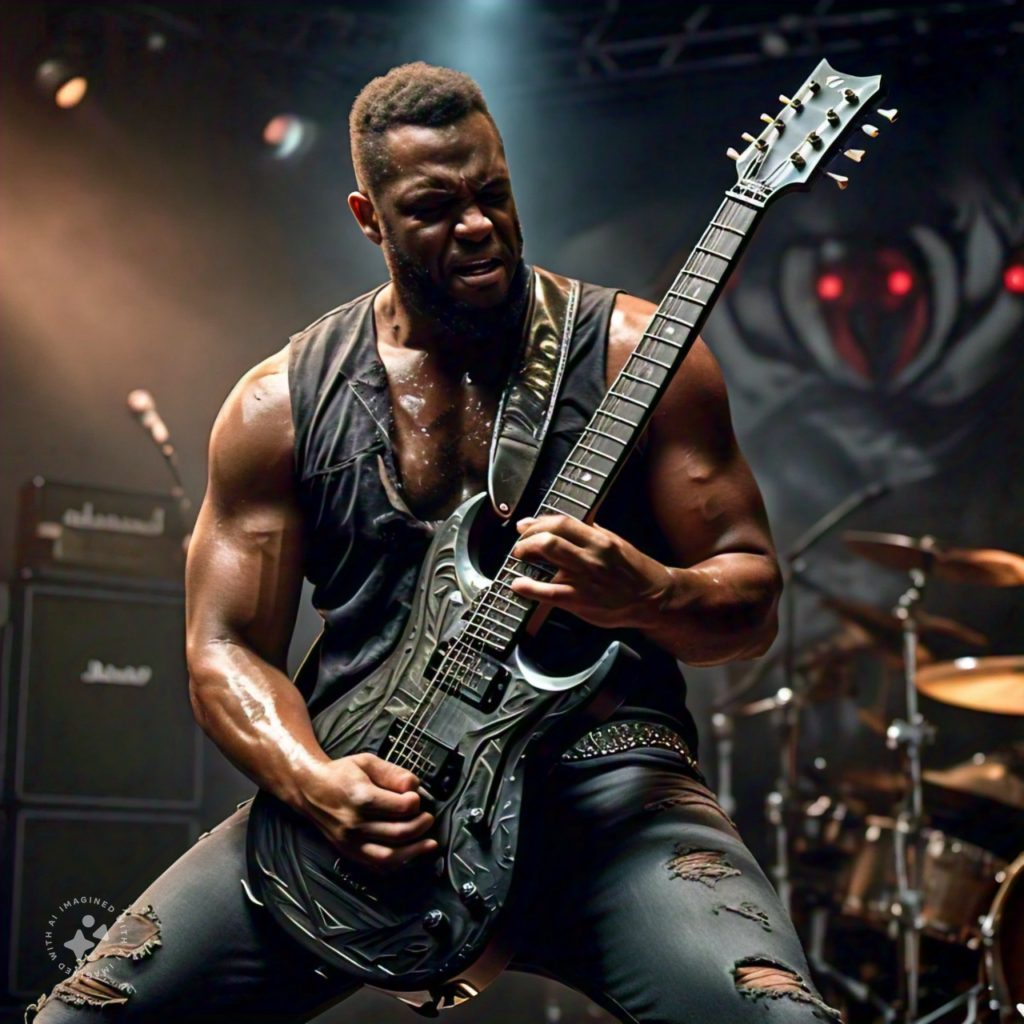Mastering the Art of Metal Guitar: A Comprehensive Guide
Learning to play metal guitar is a journey that combines technical skill, musical theory, and a deep appreciation for the genre’s unique characteristics. Metal, with its powerful riffs, intricate solos, and aggressive rhythms, demands both dedication and passion from its players. Whether you’re a beginner or an experienced guitarist looking to delve into the world of metal, this guide will help you navigate the essential techniques, gear, and practice routines needed to become a proficient metal guitarist.
Understanding the Basics
Before diving into the specific techniques of metal guitar, it’s crucial to have a solid foundation in basic guitar skills. These include understanding chords, scales, and basic finger positioning. Metal guitar often involves fast playing and complex finger movements, so having a strong grasp of these basics will make learning more advanced techniques easier.
Essential Gear for Metal Guitar
To get the signature sound of metal guitar, you’ll need the right equipment. Here are some essential pieces of gear:
- Electric Guitar: While you can play metal on various types of guitars, certain models are better suited for the genre. Look for guitars with humbucker pickups, which offer a thicker, more powerful sound. Brands like Ibanez, ESP, and Jackson are popular among metal guitarists.
- Amplifier: A high-gain amplifier is essential for achieving the heavy distortion that characterizes metal guitar. Brands like Marshall, Mesa/Boogie, and Peavey are known for their metal-friendly amps.
- Pedals: Distortion and overdrive pedals can help you achieve the crunchy, aggressive tones needed for metal. Additionally, consider pedals for effects like reverb, delay, and chorus to add depth to your sound.
- Strings: Heavier gauge strings are preferred for metal guitar as they produce a fuller sound and are better suited for lower tunings often used in the genre.
Techniques and Skills
Mastering metal guitar involves learning a variety of techniques that are essential to the genre. Here are some key skills to focus on:
Power Chords
Power chords are the backbone of many metal riffs. They are simple to play but can produce a powerful sound. A power chord consists of the root note and the fifth, making it a two-note chord. Practice moving these chords up and down the neck of the guitar to create different riffs.
Palm Muting
Palm muting is a technique where you rest the side of your picking hand lightly on the strings near the bridge while playing. This produces a muted, chugging sound that is a staple in metal rhythms. Experiment with different levels of pressure to achieve the desired tone.
Alternate Picking
Alternate picking involves striking the strings with both downstrokes and upstrokes. This technique is crucial for playing fast passages and intricate solos. Start slowly to ensure accuracy, then gradually increase your speed.
Tremolo Picking
Tremolo picking is a rapid alternation of up and down strokes on a single note. This technique is often used in metal solos and fast riffs. Practice with a metronome to maintain consistent timing.
Sweep Picking
Sweep picking is a technique used to play arpeggios quickly and smoothly. It involves “sweeping” the pick across multiple strings in a single motion, creating a fluid, cascading sound. This technique can be challenging, so start slowly and focus on clean, precise execution.
Tapping
Tapping involves using the fingers of your picking hand to tap notes on the fretboard, creating fast and intricate melodies. This technique is commonly used in solos and can add a dazzling effect to your playing.
Practicing Metal Guitar
Consistent and focused practice is essential for mastering metal guitar. Here are some tips for effective practice:
- Set Goals: Define specific goals for each practice session. This could be learning a new technique, mastering a particular riff, or increasing your speed.
- Use a Metronome: Practicing with a metronome helps develop your sense of timing and ensures you can play accurately at different tempos.
- Break It Down: If you’re struggling with a particular passage, break it down into smaller sections and practice each one slowly before putting them together.
- Warm Up: Start each practice session with warm-up exercises to prevent injury and improve finger dexterity.
- Record Yourself: Recording your practice sessions allows you to track your progress and identify areas for improvement.
Learning from the Masters
Listening to and studying the work of great metal guitarists can provide inspiration and insight into the genre. Here are a few legendary metal guitarists to explore:
- Tony Iommi: Known as the “Godfather of Metal,” Tony Iommi’s work with Black Sabbath laid the foundation for the genre. His use of dark, heavy riffs is iconic.
- Randy Rhoads: Rhoads’ work with Ozzy Osbourne showcased his virtuosic playing and innovative techniques, blending classical influences with metal.
- Dimebag Darrell: As the guitarist for Pantera, Dimebag Darrell’s aggressive playing style and powerful riffs made him a metal legend.
- James Hetfield: Metallica’s rhythm guitarist is known for his innovative approach to riff writing and precise technique, making him a key figure in thrash metal.
- Jeff Loomis: As the guitarist for Nevermore and Arch Enemy, Jeff Loomis is renowned for his technical prowess and complex compositions.
Expanding Your Horizons
While mastering the core techniques of metal guitar is essential, don’t be afraid to explore different subgenres and styles within metal. Each subgenre offers unique challenges and can help you develop a more diverse skill set. Here are a few subgenres to consider:
- Thrash Metal: Characterized by fast tempos and aggressive guitar work. Bands like Metallica, Slayer, and Megadeth are pioneers of this style.
- Death Metal: Known for its extreme speed and complexity. Bands like Death, Cannibal Corpse, and Morbid Angel exemplify this genre.
- Black Metal: Features tremolo picking, blast beat drumming, and atmospheric elements. Bands like Mayhem, Burzum, and Darkthrone are key figures.
- Progressive Metal: Combines metal with complex song structures and elements from other genres. Dream Theater and Opeth are notable bands.
- Doom Metal: Characterized by slow tempos and a heavy, ominous sound. Black Sabbath and Candlemass are influential bands in this genre.
Conclusion
Learning to play metal guitar is a rewarding journey that combines technical skill, creativity, and a passion for the genre. By mastering the essential techniques, investing in the right gear, and practicing consistently, you can develop the skills needed to become a proficient metal guitarist. Remember to draw inspiration from the masters and explore the diverse subgenres within metal to continually challenge yourself and expand your musical horizons. With dedication and perseverance, you’ll be shredding powerful riffs and intricate solos in no time.
If you’d like to learn more schedule your free first lesson at Los Feliz Guitar Lessons today.

